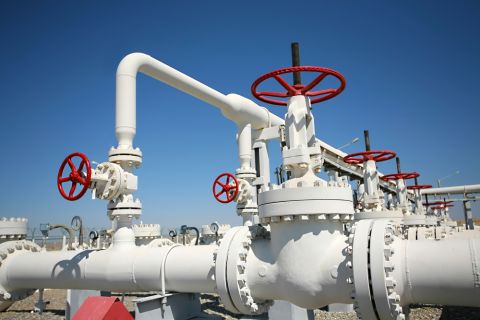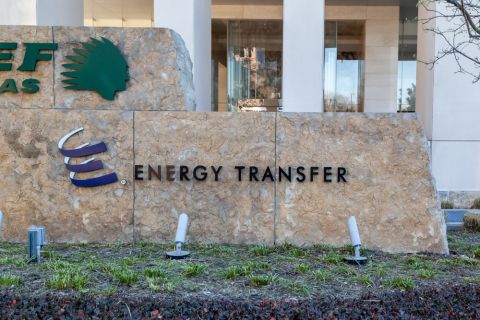The gap between what is said in crude oil markets and what actually happens in the physical trading world has been illustrated by a commitment by the OPEC+ group to boost output being followed by its top member, Saudi Arabia, raising prices.
Producer group OPEC+ said after meeting last week it would bring forward oil production increases to offset lost Russian output as a result of Western sanctions in the wake of Russia's invasion of Ukraine.
But while this action would seem an attempt to ensure supply meets demand, and therefore keeps prices from surging even higher, the OPEC+ decision was quickly followed by news that Saudi Arabia will boost its official selling prices for July for its customers in Asia and Europe.
OPEC+ said after its June 2 meeting that the group would lift output by 648,000 barrels per day (bpd) in July—or 0.7% of global demand—and a similar amount in August, up from an initial plan to add 432,000 bpd a month over three months until September.
OPEC+ groups the Organization of the Petroleum Exporting Countries and other producers, including Russia, which has seen its output decline by about 1 million bpd since the Feb. 24 attack on Ukraine.
The oil market was largely unimpressed by the OPEC+ promise of higher output, with benchmark Brent crude futures LCOc1 gaining 1.8% on June 3 to close at $119.72 a barrel.
Brent is now about 24% higher than it was the day before Russia's invasion of Ukraine, and given the European Union's decision to end about 90% of its imports from Russia, the pressure remains for further gains.
The problem for oil markets is that the credibility of OPEC+ is becoming severely strained, given the group's inability to produce as much crude as it says it is going to.
The OPEC part of the group produced 24.72 million bpd in May, meaning their output was about 858,000 bpd below the target agreed by the wider OPEC+ collective.
Add in Russia's declining output and exports, and it's clear that actual supply is falling well short of what OPEC+ has pledged.
This failure to meet targets is gaining increasing attention in a market fretting over whether Russia will be able to switch its customers and maintain export volumes, or whether the global market is going to tighten further as Russian volumes decline.
The OPEC+ decision to say it would boost output may be viewed as an attempt to calm the market over supply worries, and thus try to ensure that prices don't spike to levels that would lead to a global economic slowdown and its related demand destruction.
Saudi price boost
It is perhaps curious that Saudi Aramco, the kingdom's state-controlled oil producer, chose to increase its official selling prices (OSPs) for refiners in its top destinations of Asia and Europe for July-loading cargoes.
Aramco raised the OSP of its benchmark Arab Light grade for Asia to a premium of $6.50 a barrel over the Oman/Dubai regional benchmark, up $2.10 from $4.40 for June and above the increase of $1-$1.50 expected by Asian refiners surveyed ahead of the announcement.
The OSP for customers in northwest Europe for Arab Light was lifted to $4.30 a barrel over Brent for July, up $2.20 for June-loading cargoes.
An increase in the OSPs for Asia was always on the cards given the recent surge in refining margins, and also the increase in the premium of Brent crude over the Dubai equivalent.
A typical refinery in Singapore processing Dubai crude is enjoying a margin of about $25.19 a barrel, or more than three times the 365-day moving average of $8.11.
This is a reflection of strong demand, especially for diesel, and the sharp decline in exports of refined fuels from China this year, as well as from Russia, which has tightened product markets.
While it is logical for Aramco to raise prices to capture for itself some of the high refining margins, it is seemingly at odds with the OPEC+ idea of ensuring markets are well supplied at a price that doesn't damage the demand outlook.
Recommended Reading
Ozark Gas Transmission’s Pipeline Supply Access Project in Service
2024-04-18 - Black Bear Transmission’s subsidiary Ozark Gas Transmission placed its supply access project in service on April 8, providing increased gas supply reliability for Ozark shippers.
Kinder Morgan Sees Need for Another Permian NatGas Pipeline
2024-04-18 - Negative prices, tight capacity and upcoming demand are driving natural gas leaders at Kinder Morgan to think about more takeaway capacity.
Scathing Court Ruling Hits Energy Transfer’s Louisiana Legal Disputes
2024-04-17 - A recent Energy Transfer filing with FERC may signal a change in strategy, an analyst says.
Balticconnector Gas Pipeline Will be in Commercial Use Again April 22, Gasgrid Says
2024-04-17 - The Balticconnector subsea gas link between Estonia and Finland was damaged in October along with three telecoms cables.
Targa Resources Ups Quarterly Dividend by 50% YoY
2024-04-12 - Targa Resource’s board of directors increased the first-quarter 2024 dividend by 50% compared to the same quarter a year ago.




